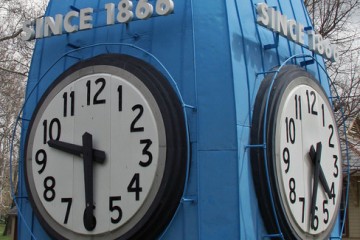Rosh Hashanah – Beginning of the Year

Leshon Ima, Mother Tongue with Dr. Rachel Zohar Dulin, Special To The Dayton Jewish Observer
Like every year at this season, we observe the fall holidays starting with Rosh Hashanah, the first day of the Jewish year, continuing with the observance of Yom Kippur and ending with the happy celebrations of Sukkot and Simchat Torah.
Rosh Hashanah, which conjures a mood of contemplation and self-examination, gives the tone to the observance of the holidays.
It sets the stage to a short, yet intensive period of a personal spiritual voyage, which leads to teshuvah, the returning to faith and forgiveness.

The name Rosh Hashanah befits the day which begins the year. The first word, rosh, means head or beginning.
There are many terms in Hebrew where rosh is at the head. For example, rosh chodesh means the beginning of the month, and rosh memshalah the head of the government, the prime minister.
Yoshev rosh is a chairman and keev rosh is a headache. Koved rosh, literally heavy head, implies seriousness and kalut rosh, light-mindedness, implies frivolity.
The second word, shanah, means year. It is based in the verb shanah meaning change and may have originally referred to the change of seasons.
Shanah, too, is at the center of many concepts. For example, shanah beshanah means annually, yom hashanah means anniversary, and luach shannah means calendar.
Beginnings are often marked with ritual. A ritual that comes to mind related to Rosh Hashanah is tekiat shofar, the blowing of the shofar, an ancient wind instrument made of a ram’s horn.
The word shofar is related to the Akkadian word sapparu meaning wild goat. The shofar is blown in the synagogue many times during the autumn holidays, reminiscent of the biblical custom to declare a holiday season (Lev. 25:9).
It is also a reminder of the biblical Yom T’ruah, the day of blowing the shofar, the antecedent to Rosh Hashanah, which was observed on the first day of the seventh month of the biblical calendar (Num. 29:1).
Last but not least, the observance of Rosh Hashanah brings to mind the prayer and the hope to be inscribed in Sefer Hachayim, the Book of Life, for a good and healthy life.
The reference to this celestial book was already mentioned in the Bible (Ps. 69:29), but not in connection with the new year.
It is only later in Jewish tradition the hope to be inscribed in Sefer Hachayim became an integral part of the holiday supplications.
The traditional blessing l’shannah tova tikatevu, may you be inscribed to a good year, is rooted in this hope.
Dr. Rachel Zohar Dulin is a professor of biblical literature at Spertus College in Chicago and an adjunct professor of Bible and Hebrew at New College of Florida.
To read the complete September 2015 Dayton Jewish Observer, click here.





